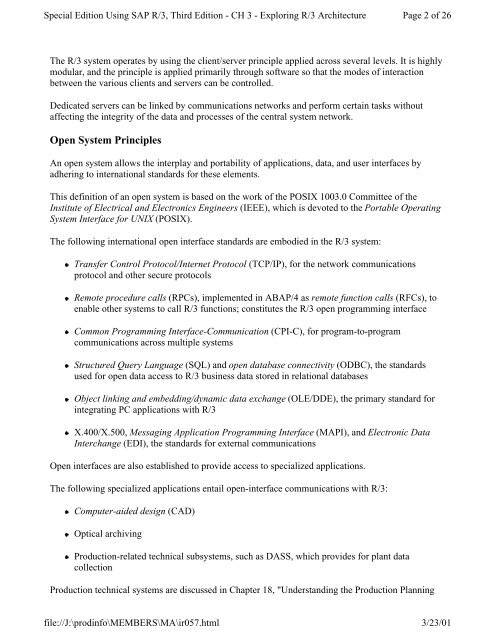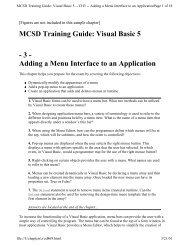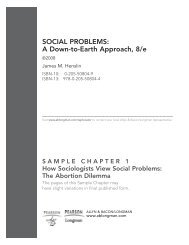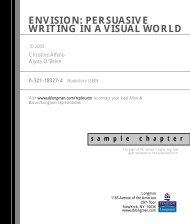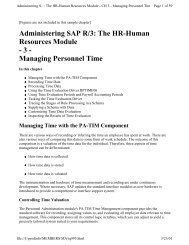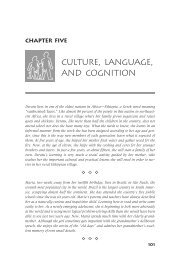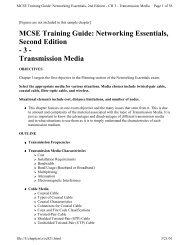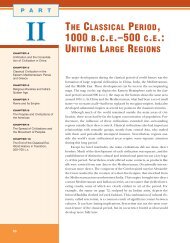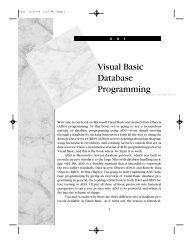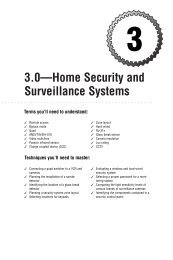Special Edition Using SAP R/3, Third Edition
Special Edition Using SAP R/3, Third Edition
Special Edition Using SAP R/3, Third Edition
You also want an ePaper? Increase the reach of your titles
YUMPU automatically turns print PDFs into web optimized ePapers that Google loves.
<strong>Special</strong> <strong>Edition</strong> <strong>Using</strong> <strong>SAP</strong> R/3, <strong>Third</strong> <strong>Edition</strong> - CH 3 - Exploring R/3 Architecture Page 2 of 26<br />
The R/3 system operates by using the client/server principle applied across several levels. It is highly<br />
modular, and the principle is applied primarily through software so that the modes of interaction<br />
between the various clients and servers can be controlled.<br />
Dedicated servers can be linked by communications networks and perform certain tasks without<br />
affecting the integrity of the data and processes of the central system network.<br />
Open System Principles<br />
An open system allows the interplay and portability of applications, data, and user interfaces by<br />
adhering to international standards for these elements.<br />
This definition of an open system is based on the work of the POSIX 1003.0 Committee of the<br />
Institute of Electrical and Electronics Engineers (IEEE), which is devoted to the Portable Operating<br />
System Interface for UNIX (POSIX).<br />
The following international open interface standards are embodied in the R/3 system:<br />
Transfer Control Protocol/Internet Protocol (TCP/IP), for the network communications<br />
protocol and other secure protocols<br />
Remote procedure calls (RPCs), implemented in ABAP/4 as remote function calls (RFCs), to<br />
enable other systems to call R/3 functions; constitutes the R/3 open programming interface<br />
Common Programming Interface-Communication (CPI-C), for program-to-program<br />
communications across multiple systems<br />
Structured Query Language (SQL) and open database connectivity (ODBC), the standards<br />
used for open data access to R/3 business data stored in relational databases<br />
Object linking and embedding/dynamic data exchange (OLE/DDE), the primary standard for<br />
integrating PC applications with R/3<br />
X.400/X.500, Messaging Application Programming Interface (MAPI), and Electronic Data<br />
Interchange (EDI), the standards for external communications<br />
Open interfaces are also established to provide access to specialized applications.<br />
The following specialized applications entail open-interface communications with R/3:<br />
Computer-aided design (CAD)<br />
Optical archiving<br />
Production-related technical subsystems, such as DASS, which provides for plant data<br />
collection<br />
Production technical systems are discussed in Chapter 18, "Understanding the Production Planning<br />
file://J:\prodinfo\MEMBERS\MA\ir057.html 3/23/01


